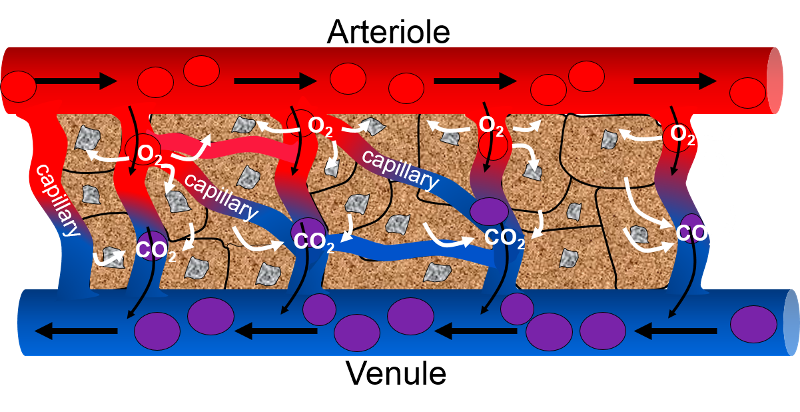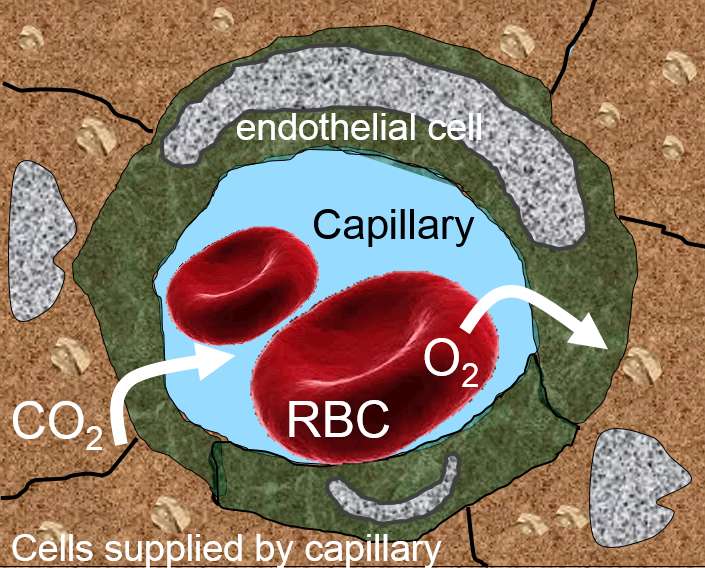Supplying Oxygen and Expelling Carbon Dioxide
Circulation Through the Heart and Lungs
Gas Exchange in the Lung
The YouTube video below (3:09) illustrates oxygen transport from the lungs to cells throughout the body.
Cellular Gas Exchange
Oxygen is necessary for cells to be able to generate cellular energy from glucose or fatty acids. After blood is reoxygenated in the lungs, it leaves the left ventricle of the heart and is distributed throughout the body in increasingly branched blood vessels. Arteries branch into arterioles, which, in turn, eventually branch into capillaries. The image below on the left shows an arteriole branching into smaller capillaries which supply nutrients and oxygenated red blood cells (RBCs) to metabolizing cells (shown in stippled brown). As RBCs pass through the capillaries and release oxygen to the cells, they become progressively deoxygenated (purple RBCs). At the same time, carbon dioxide and other wastes are transferred into capillary blood for excretion. Capillary blood then enters venules to be returned to the heart and lungs, where CO2 is exhaled and blood becomes reoxygenated.The image on the right shows a capillary that has been cut in cross-section. The lumen (interior) of the capillary is shown in blue with a single RBC, since capillaries are so fine that RBCs often pass through them one at a time. The endothelial cells lining the capillary are shown in green, and the metabolizing cells receiving oxygen and nutrients from the capillary are shown in stippled brown.


This video (56 sec.) illustrates how CO2 is transported from tissues to the lungs.


